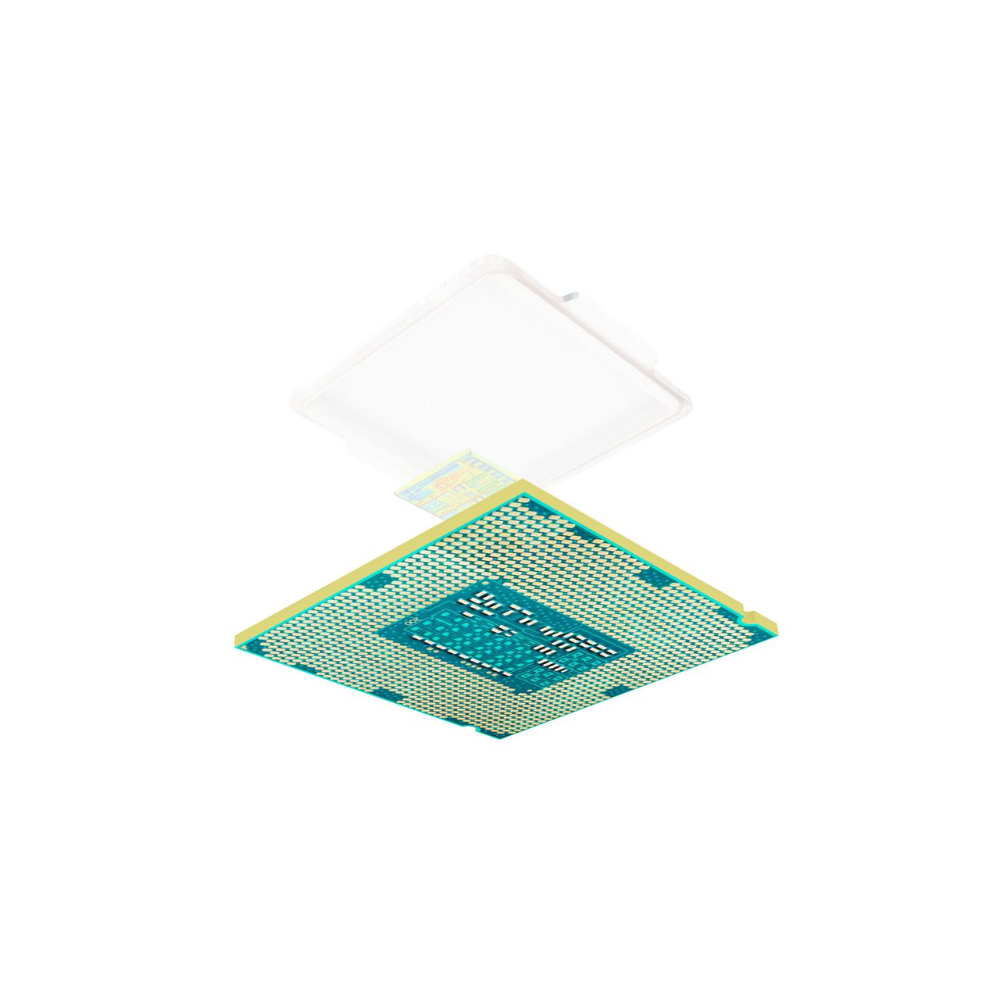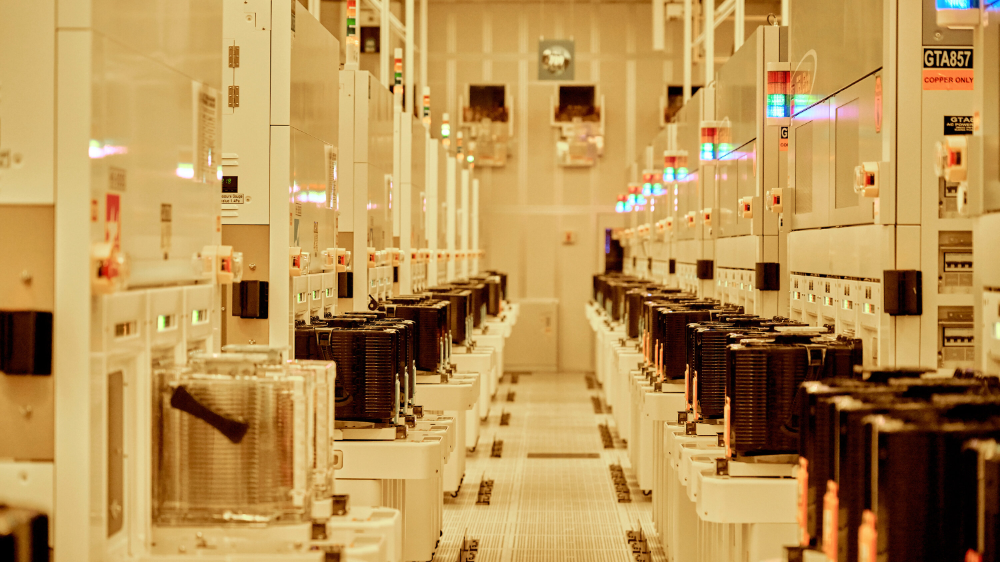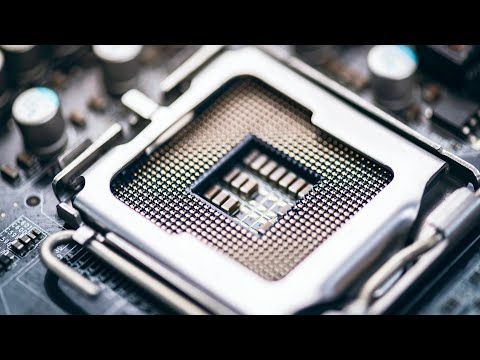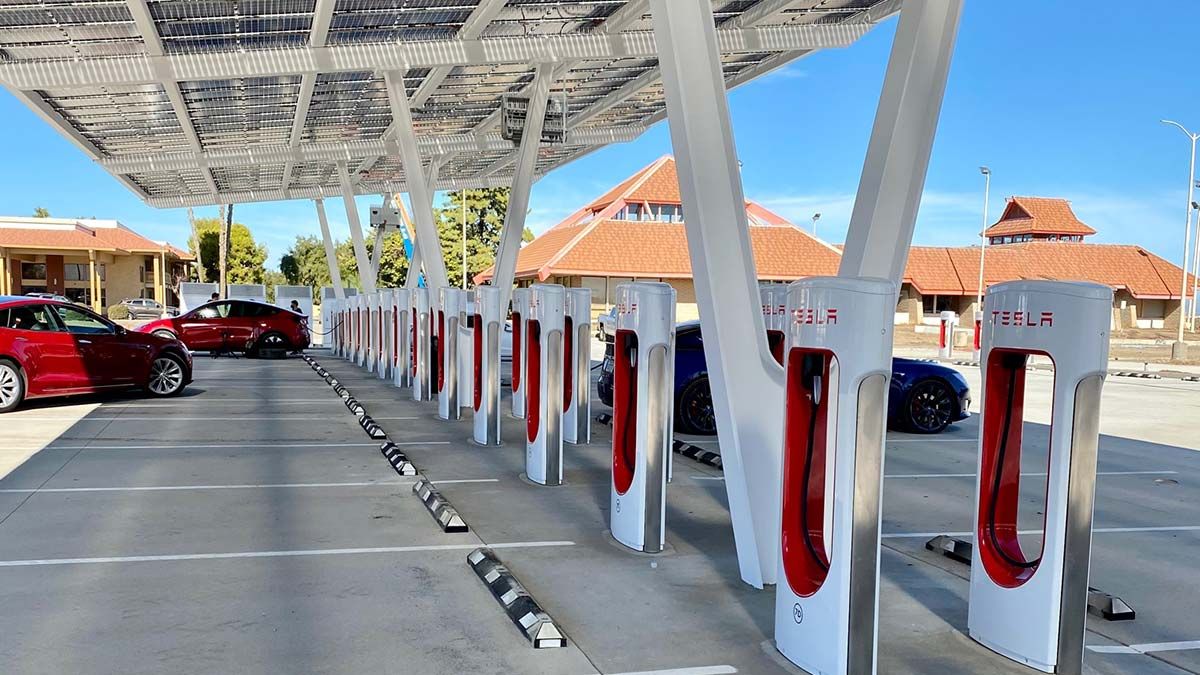The Tiny Components, Massive Consequences: A Global Disruptor
In an increasingly digitized world, semiconductor chips are the unseen, yet indispensable, bedrock of modern technology. From the smartphone in your pocket and the laptop on your desk to the advanced infotainment system in your car and critical medical devices, these tiny components power virtually everything. When a global chip shortage gripped the world, particularly from late 2020 through 2022 and beyond, its impact rippled across nearly every industry imaginable, sending shockwaves through supply chains, slowing production, and even contributing to inflationary pressures. This wasn’t merely a minor inconvenience; it was a stark reminder of the interconnectedness of our global economy and the fragility of highly optimized supply chains. The repercussions continue to be felt, prompting a fundamental re-evaluation of how these crucial components are sourced, manufactured, and distributed.
The Genesis of the Crisis: A Perfect Storm of Factors
The global chip shortage wasn’t attributable to a single cause but rather a convergence of unforeseen events and long-standing vulnerabilities within the semiconductor ecosystem. It was, as many experts describe it, a “perfect storm.”
A. COVID-19 Pandemic Disruptions: The most significant catalyst was the onset of the COVID-19 pandemic in early 2020. i. Factory Shutdowns and Workforce Disruptions: Lockdowns and public health measures led to temporary closures or reduced operational capacities at semiconductor fabrication plants (fabs) and assembly/testing facilities worldwide. This directly impacted production output and created immediate supply bottlenecks. ii. Logistical Hurdles: Restrictions on movement and reduced air freight capacity led to delays in the transportation of raw materials, finished chips, and manufacturing equipment, further exacerbating supply chain disruptions. iii. Shift in Consumer Demand: Paradoxically, while many industries faced initial downturns, the pandemic also triggered an unprecedented surge in demand for consumer electronics. As remote work and online learning became the norm, sales of laptops, webcams, home networking equipment, and gaming consoles (like the PlayStation 5 and Xbox Series X, which faced severe scarcity) skyrocketed. This sudden spike in demand quickly outstripped existing chip manufacturing capacity.
B. “Just-in-Time” Manufacturing Vulnerabilities: Many industries, particularly the automotive sector, had adopted “just-in-time” (JIT) manufacturing strategies. This lean inventory approach minimizes warehousing costs by receiving components precisely when needed for production. i. Automotive Miscalculation: At the pandemic’s outset, anticipating a significant decline in car sales, automakers drastically cut their semiconductor chip orders. When vehicle demand rebounded much faster and stronger than expected in late 2020, they found themselves at the back of the line for chip supply. ii. Low Priority for Automotive Chips: Automotive chips often utilize older, mature manufacturing nodes (less advanced processes) that have lower profit margins for chip manufacturers compared to leading-edge chips used in smartphones and data centers. Consequently, when demand surged from the consumer electronics sector, chip foundries prioritized these higher-margin orders, leaving automakers with severely constrained supply.
C. Geopolitical Tensions and Trade Wars: i. US-China Trade War: Sanctions imposed by the U.S. Department of Commerce on key Chinese technology companies, particularly Huawei, in 2020, disrupted established supply chains. These companies began stockpiling chips to secure future supply, further tightening the market. ii. Increased National Security Focus: The reliance on a few concentrated geographic areas for chip manufacturing (especially Taiwan) spurred national security concerns, prompting countries to consider diversifying and localizing chip production, but this takes years to materialize.
D. Natural Disasters and Accidental Events: i. Texas Winter Storm (February 2021): An unprecedented winter storm in Texas, USA, forced the shutdown of several semiconductor manufacturing plants, including those operated by Samsung, NXP, and Infineon, for weeks. This severely impacted the production of chips critical for the automotive industry. ii. Taiwan Drought (2021): Taiwan, a global leader in advanced semiconductor manufacturing, experienced its worst drought in decades. Chip fabrication requires vast quantities of ultra-pure water, and the drought complicated and slowed down production processes at a critical time. iii. Factory Fires: Fires at key manufacturing facilities, such as the Renesas Electronics plant in Japan (March 2021), a major supplier of automotive microcontrollers, further compounded the supply issues.
E. Cryptocurrency Boom: The surging popularity and value of cryptocurrencies, particularly during 2020-2021, fueled immense demand for specialized graphics processing units (GPUs) used in cryptocurrency mining. This diverted significant chip manufacturing capacity away from other sectors, especially consumer electronics.
F. Long Production Lead Times: Semiconductor manufacturing is an incredibly complex and time-consuming process. From wafer start to finished chip, it can take anywhere from 12 weeks for simpler chips to over 20 weeks for complex ones, with additional time for packaging and testing. Ramping up new production capacity (building new fabs) can take 3-5 years and billions of dollars, making it impossible to respond quickly to sudden demand spikes.
Far-Reaching Impact: Industries Under Siege
The global chip shortage sent shockwaves across an incredibly diverse range of industries, highlighting the ubiquitous nature of semiconductors in modern products and services.
A. Automotive Industry: The Hardest Hit. The automotive sector arguably bore the brunt of the shortage, leading to unprecedented disruptions. i. Massive Production Cuts: Automakers worldwide were forced to halt production lines, idle factories, and significantly cut output. Companies like General Motors, Ford, Toyota, Volkswagen, and Stellantis announced multi-billion dollar revenue losses and millions of vehicles cut from production schedules. This resulted in empty dealership lots and long waiting lists for new cars. ii. Feature Deletion and Price Hikes: To conserve chips, some manufacturers had to remove certain features from new vehicles, such as heated seats, advanced infotainment systems, or even digital displays, replacing them with analog alternatives. The scarcity also drove up prices for both new and used vehicles due to limited supply and surging demand. iii. Supply Chain Restructuring: The crisis exposed the fragility of the automotive “just-in-time” model, forcing automakers to rethink their inventory strategies, engage in direct relationships with chip manufacturers, and explore dual-sourcing options.
B. Consumer Electronics: Delayed Launches and Scarce Products. While also contributing to the demand surge, the consumer electronics sector faced its own significant challenges. i. Gaming Consoles: The launch of next-generation gaming consoles (PlayStation 5, Xbox Series X/S) was severely hampered, leading to chronic shortages that lasted for years, frustrating gamers worldwide. ii. Smartphones and Laptops: While premium models of smartphones and high-end laptops generally fared better due to their manufacturers’ greater purchasing power, lower-cost models and components for peripherals often faced delays and increased prices. iii. Home Appliances: Even seemingly simple appliances like washing machines, refrigerators, and microwaves, which now incorporate basic microcontrollers, experienced production delays and price increases, demonstrating the pervasive nature of chip dependency.
C. Information Technology (IT) and Data Centers: The backbone of the digital economy also felt the pinch. i. Server and Networking Equipment: Shortages impacted the production of servers, networking gear, and other essential infrastructure for data centers and cloud computing. This could potentially slow down digital transformation initiatives and cloud expansion for businesses. ii. Enterprise Hardware: Delays in procuring new enterprise-grade hardware, from routers to specialized computing units, affected businesses’ ability to upgrade their IT infrastructure, potentially impacting productivity and competitiveness.
D. Medical Devices and Healthcare Technology: While often prioritized, even critical medical devices were not entirely immune. i. Diagnostic Equipment: Shortages could affect the production of advanced diagnostic equipment, imaging machines, and patient monitoring systems, potentially impacting healthcare delivery. ii. Wearable Health Tech: The booming market for smartwatches and other wearable health devices also faced supply constraints, as these rely heavily on compact, low-power chips.
E. Other Industries: The impact extended even further. i. Industrial Automation: Robotics, factory control systems, and other industrial automation equipment, crucial for modern manufacturing, experienced delays. ii. Renewable Energy: Components for solar inverters and smart grid infrastructure, which use power semiconductors, also saw supply chain issues. iii. Defense and Aerospace: These sectors, while often having prioritized supply chains, also faced challenges in procuring specialized chips for their sophisticated systems.
Economic Repercussions: A Ripple Effect on Global Economies
The global chip shortage had significant and multifaceted economic repercussions, affecting inflation, GDP growth, and global trade dynamics.
A. Inflationary Pressures: i. Increased Production Costs: The scarcity of chips led to significant price increases for semiconductor components themselves. Manufacturers absorbed some of these costs, but a substantial portion was passed on to consumers, leading to higher prices for a wide range of goods, from cars to electronics. ii. Reduced Supply, Higher Demand: Basic economic principles dictate that when supply is constrained while demand remains high, prices naturally increase. This was clearly evident in the automotive market, where the limited availability of new vehicles drove up prices for both new and used cars.
B. Impact on GDP Growth: i. Lost Revenue and Production: Industries like automotive experienced billions of dollars in lost revenue due to inability to produce goods. This directly translated into reduced manufacturing output and, consequently, a drag on national GDP growth rates in major industrial economies. ii. Supply Chain Bottlenecks: The widespread supply chain bottlenecks caused by the chip shortage created inefficiencies across various sectors, hindering overall economic activity and slowing down recoveries in some regions post-pandemic.
C. Investment and Strategic Shifts: i. Increased Capital Expenditure in Foundries: The crisis prompted massive investments in expanding chip manufacturing capacity. Governments worldwide, including the United States (with the CHIPS and Science Act), the European Union (EU Chips Act), Japan, and South Korea, announced multi-billion dollar initiatives to incentivize the construction of new fabrication plants (fabs) and reduce reliance on concentrated production hubs. This represents a significant shift towards reshoring or friendshoring semiconductor production. ii. Diversification of Supply Chains: Companies are actively working to diversify their supplier bases and build more resilient supply chains, moving away from single-source reliance and embracing multi-regional sourcing strategies to mitigate future disruptions.
D. Job Market Impacts: i. Temporary Layoffs and Furloughs: In industries like automotive, factory shutdowns and production cuts led to temporary layoffs and furloughs for thousands of workers. ii. Demand for Skilled Labor: Conversely, the push for increased domestic chip manufacturing has created a surging demand for skilled labor in semiconductor engineering, manufacturing, and R&D.
The Road to Recovery and Future Resilience
While the acute phase of the global chip shortage has largely eased compared to its peak, the semiconductor industry and its consumers are still navigating a complex recovery, and the lessons learned are driving fundamental shifts towards greater resilience.
A. Uneven Recovery and Continued Lead Times: i. Specific Chip Types: The recovery has been uneven across different types of chips. While supply for some consumer electronics chips has stabilized, certain older-node chips (often used in automotive and industrial applications) or specialized power management chips still experience longer lead times. ii. Demand vs. Capacity: The balance between surging demand (driven by megatrends like AI, IoT, and electrification) and the inherently slow process of adding new manufacturing capacity means that periodic supply-demand imbalances could still occur.
B. Strategic Investments and Regionalization: i. New Fab Construction: Billions of dollars are being invested globally in building new semiconductor fabrication plants. This includes major projects in the US (e.g., TSMC, Intel, Samsung), Europe (e.g., Intel, TSMC), and Japan. These new fabs, while taking years to come online, are crucial for increasing overall capacity and diversifying geographic concentration. ii. Government Incentives: Governments are playing a proactive role, offering significant subsidies, tax breaks, and policy support to attract semiconductor manufacturing facilities to their shores, recognizing chips as strategic national assets.
C. Supply Chain Restructuring and Visibility: i. Supplier Diversification: Companies are actively diversifying their supplier bases, building relationships with multiple foundries and assembly partners in different regions to reduce single points of failure. ii. Increased Inventory Buffers: The “just-in-time” philosophy is being re-evaluated, with many companies now opting to hold larger strategic inventories of critical components to cushion against future supply shocks. iii. Real-time Visibility: Investment in advanced supply chain management software and data analytics is increasing, providing companies with better real-time visibility into their supply chains, enabling earlier detection of potential disruptions.
D. Design Adjustments and Standardization: i. Chip Redesign and Substitution: Engineers are actively redesigning products to utilize more readily available or standardized chips, reducing reliance on highly specialized or single-sourced components. ii. Modular Design: Adopting more modular product designs allows for easier substitution of components or rapid adaptation to different chip availabilities.
E. Talent Development: The expansion of the semiconductor industry necessitates a significant increase in skilled labor. Governments and industry are investing in workforce development programs, engineering education, and attracting global talent to meet the growing demand for highly specialized roles.
The global chip shortage served as a profound wake-up call, exposing the vulnerabilities inherent in a hyper-globalized, lean-inventoried manufacturing landscape. While the immediate crisis may have subsided, its enduring legacy is a powerful drive towards building a more robust, resilient, and geographically diversified semiconductor supply chain. The future of virtually every technology-driven industry hinges on the sustained availability of these crucial silicon brains, making supply chain resilience not just an economic imperative, but a strategic national security priority for countries around the world.














